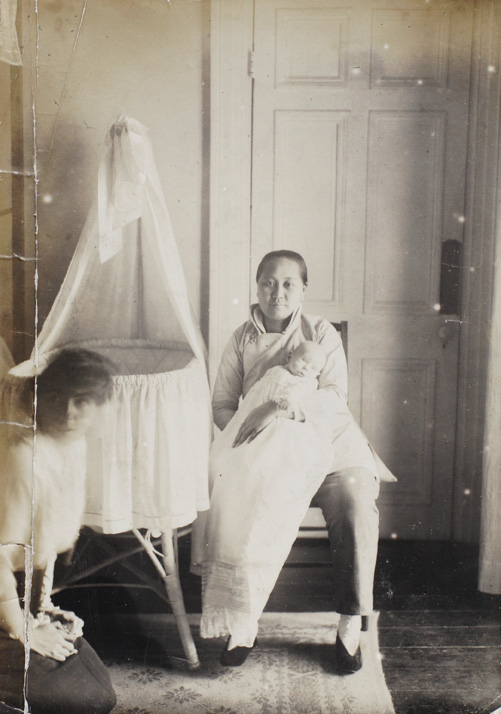Omnipresent in many of the portraits of foreign families, especially children, is the amah. Often unnamed, or simply captioned ‘Amah’ , these were the Chinese nannies and wet-nurses, servants who suckled or looked after children. They were indispensable additions to the foreign household, and often remembered with great affection by their charges, not least because, as elsewhere in the worlds of colonial settlement or back at home, they were simply a more immediate and tangible daily presence in the lives of foreign children than their mothers.
This gave rise to some anxiety, which was vented in the pages of the English-language press in China. Young foreign children, it was feared with good reason in many cases, might have a better grasp of their nanny’s dialect than their native English. Boys especially were at risk of being spoilt, of being too mollycoddled by their carers. There were also darker urban legends, for example that servants would use opium to make children sleep, or that wet-nurses might pass on disease. On such generally unfounded anxieties was the foreign encounter with China grounded.
As a result many foreign children were eventuially wrenched from their homes and packed off to boarding schools, if families could afford it, to the Chefoo School run by the China Inland Mission in Yantai, or to Britain.
Life for most foreigners in China — though certainly not all — was usually a privileged one, more privileged than life back in Britain would have been, even when domestic service was a norm (my paternal grandmother’s first employment was as a housemaid). But that life also had its costs: the emotional cost of the separation of parents and children, and of the separation of children from their Amahs.

